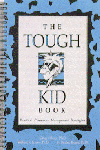
 |
|||||||||||||||||||||||||
 |
|||||||||||||||||||||||||

ISBN: 0-944584-54-3
Publication Date: 1992
Spiral Book, 132 pgs.
Grade Level: PreK, K-2; 3-5; 6-12
Summary
Looking for techniques to address student aggression, noncompliance, and poor academic performance? Here's the answer: a practical program that is not only effective, but can be implemented quickly and inexpensively.
Contents
Introduction: What this book will do for you
Chapter 1: What does a tough kid look like?
Chapter 2 – Unique Positive Procedures
Positive Strategies- Positive Reinforcement, Concerns with
Positive Reinforcement
Antecedent Strategies – Motivation and Encouragement
Effective Use of Positive Reinforcement- Natural Positive
Reinforcement, Edible Reinforcement, Material
Reinforcement, Social Reinforcement
Assessing and Selecting Reinforcement
“But doctor nothing reinforces my student!”
Variables that make reinforcers effective, Fading
Unique Delivery Systems for Positive Reinforcement- the
Wandering Social Reinforcer, Chart Moves, Magic Pens,
Spinners, Mystery Motivators, Grab Bags, Lottery/Raffle
Tickets
Summary and References
Chapter3- Practical Reductive techniques for the Classroom
What are Reductive Techniques? – Effective Use of Reductive Techniques, Oh No! Not from Someone I Like, You can’t Misbehave and Do That Too – It’s Impossible
Swimming Pool Effect, Use It Early, Peer attention
The Reductive Techniques- Request and Reprimand Antecedents, Do Not Use a Question Format, Get Up Close, Use a Quiet Voice, Look em in the Eyes, Give Them Time, Ask only Twice, Don’t Give Multiple Requests, Describe the Request, Be Non-Emotional, Make more Start than Stop Requests, Verbally Reinforce Compliance
Precision Requests
Designing a Hierarchy of Consequences
Peer Influence: How to Use It Advantageously
Potent reductive Responses- Response Cost Lottery, Time Out,
Seclusionary Time Out, In-School Suspension
Positive Reductive Techniques- Differential Attention, Behavioral
Momentum, The “Sure I Will” Program, The Compliance
Matrix
Summary and References
Chapter 4- Advanced Systems for Tough Kids
Academic Instruction- Academic Learning Time, Direct
Instruction, Monitoring and Evaluation of Academic Progress
Cooperative Learning Strategies
Social Skills Training
Public Posting, Contracts, Home Notes, Beeper Tapes, Peer Tutoring, Self Management, Parent Training
Summary and References

